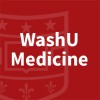
Study Evaluating the Pharmacokinetics (PK), Safety, and Tolerability of Tigecycline in Patients...
Bacterial InfectionsIntra-Abdominal Infection6 moreTo determine the pharmacokinetic profile and to evaluate the safety and tolerability of ascending multiple doses of tigecycline in patients aged 8 to 11 years with selected serious infections; complicated intra-abdominal infections (cIAI), complicated skin and skin structure infections (cSSSI), or community-acquired pneumonia (CAP).

Ertapenem Study in Pediatric Patients Who Have Urinary Tract Infections, Skin Infections or Community-acquired...
Urinary Tract InfectionsBacterial Pneumonia1 moreThis study will investigate the safety and efficacy of ertapenem versus ceftriaxone in pediatric patients with urinary tract infections, skin infections, or community-acquired pneumonia.

An Effectiveness, Safety, and Microbiology Study of Doripenem in Patients With Nosocomial (Hospital-acquired)...
PneumoniaBacterial Pneumonia3 moreThe purpose of this study is to evaluate the effectiveness and safety of doripenem monohydrate in the treatment of patients with nosocomial (hospital-acquired) pneumonia.

Efficacy and Safety Study of Oral CEM-101 Compared to Oral Levofloxacin in Treatment of Patients...
Community-Acquired Bacterial PneumoniaStudy to evaluate the safety and efficacy of oral CEM-101 compared to oral Levofloxacin in the treatment of adults with moderate to moderately severe community-acquired bacterial pneumonia.

A Study to Assess Beta-Lactam in the Treatment of Hospitalized Patients With Bacterial Pneumonia...
PneumoniaBacterialThis study will assess the efficacy and safety of intravenous beta-lactam, in comparison with ceftriaxone, in hospitalized patients with community-acquired pneumonia not caused by Legionella. The anticipated time on study treatment is 3-12 months and the target sample size is 100-500 individuals.

Study Evaluating Tigecycline Versus Imipenem/Cilastatin in Hospital-Acquired Pneumonia
Bacterial PneumoniaTo compare the efficacy and safety of the tigecycline regimen with that of the imipenem/cilastatin regimen in subjects with nosocomial pneumonia.

Aerosolized Amikacin and Fosfomycin in Mechanically Ventilated Patients With Gram-negative Pneumonia...
PneumoniaBacterialTo demonstrate the safety and efficacy of adjunctive therapy with the Amikacin fosfomycin inhalation system (AFIS) versus aerosolized placebo to treat Gram-negative pneumonia in mechanically ventilated patients receiving IV antibiotics.

A Study to Evaluate the Efficacy and Safety of Intravenous Ceftaroline Versus Intravenous Ceftriaxone...
Community-Acquired Bacterial PneumoniaLung Infection of Individual Not Recently HospitalizedThis purpose of this study is to Evaluate the Efficacy and Safety of Intravenous Ceftaroline Versus Intravenous Ceftriaxone in the Treatment of Adult Hospitalised Patients With Community-Acquired Bacterial Pneumonia in Asia.

Evaluation of Ceftaroline Fosamil Versus a Comparator in Adult Subjects With Community-acquired...
InfectionsThe purpose of this study is to determine whether ceftaroline is effective and safe for the treatment of patients with Community-acquired Bacterial Pneumonia (CABP) at risk for infection due to Methicillin-resistant Staphylococcus aureus (MRSA).

Five Versus Seven Day Antibiotic Course for the Treatment of Pneumonia in the Intensive Care Unit...
PneumoniaBacterialThe goal of the study is to determine if patients who are being treated for pneumonia in the intensive care unit can be safely treated with five days of antibiotics (the current standard is seven to eight days). The goal is to determine if the investigators can minimize antibiotic complications while still treating the infection. Patients in the study are randomly assigned to either receive antibiotics for a goal of five days or a goal of seven days. Every patient is followed daily, and if they are not responding to the antibiotics, the treating team in the intensive care unit care can continue the antibiotics for a longer course regardless of what group the patient is assigned. The investigator's hypothesis is that patients in the five day treatment goal will be able to receive less antibiotics than patients in the seven day treatment goal without any adverse effects.
